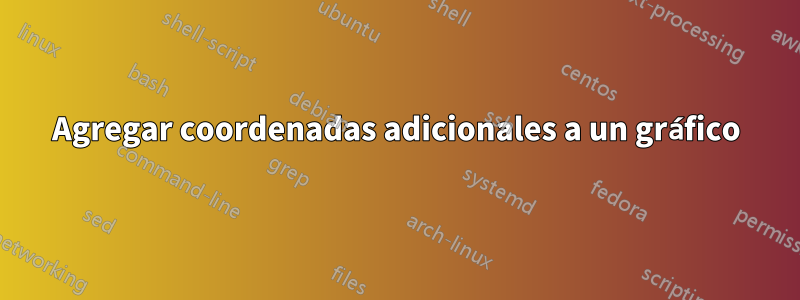
Lo he intentado una y otra vez y todavía no puedo hacer que se vea como este, especialmente las tangentes:
MWE:(créditos parajimenes)
\documentclass[tikz,border=1mm]{standalone}
\usepackage{pgfplots}
\pgfplotsset{compat=1.18}
\usetikzlibrary{arrows.meta}
\begin{document}
\begin{tikzpicture}[
scale=1.5,
every node/.style={scale=0.5},
>={Triangle[scale=0.6]}
]
% Drawing the main axis:
\draw[<->] (0,1/0.25) node[above]{$y$} --
(0,0) node[below left]{0} --
(4.5,0) node[right]{$x$};
% Drawing the main function:
\draw[thick] plot[domain=0.28:4.4, samples=200](\x,{1/\x}) node[right]{$k^{0}$};
% Drawing the dotted lines:
\draw[densely dotted, thick] (1,0) node[below]{$x^{0}$} |-
(0,1) node[left]{$y^{0}$};
% Drawing the dashed lines:
\foreach \x in {0.55,1,1.3,2}{
\draw[densely dashed] (0,0) -- (\x,1/\x);
}
% Drawing the points:
\foreach \p in {0.45, 0.55, 1, 1.3, 2, 2.6}{
\draw[fill=black] (\p,1/\p) circle (1pt);
}
% Labeling the points:
\node[above right] (M'') at (0.45,1/0.45){$M''$};
\node[above right] (A) at (0.55,1/0.55){$A$};
\node[above right] at (1,1){$P$};
\node[above right] at (1.3,1/1.3){$M$};
\node[above right] (B) at (2,1/2){$B$};
\node[above right] (M') at (2.6,1/2.6){$M'$};
% Drawing the arrows:
\draw[->] (A) -- (M'');
\draw[->] (B) -- (M');
\draw[->] (0.4,3.2) -- (0.55,3.2);
\draw[->] (3.5,0.45) -- (3.65,0.45);
% Drawing the dashed function:
\draw[ thick,
xshift = 0.3cm,
yshift = 0.3cm,
dash pattern = on 10.85pt off 3pt
] plot[domain=0.28:4.4, samples=200](\x,{1/\x}) node[right]{$k^{1}$};
\end{tikzpicture}
\end{document}
Respuesta1
El puntoCaquí se encuentra matemáticamente, ver factorAfunción. También sería posible encontrar el punto.Ccon la intersectionsbiblioteca pero entonces tendríamos que encontrar elXvalor de ese punto en elxyzsistema de coordenadas (que no sería tan difícil a menos que use un sistema de coordenadas rotado).
También hay una segunda solución con un menos antes de la raíz cuadrada, pero realmente no verifiqué si esa es realmente válida. Estoy asumiendoa> 0.b> 0, es decir, que el factor sea mayor que 1. Significadok¹ siempre está encima y a la derecha dek⁰.
Las tangentes están determinadas por la derivada de esas dos funciones (otra solución matemática). Hacer esto dentro de PGF/TikZ no será fácil, ciertamente no cuando se trata deC.
ElXvalor porA,ByCson sus propias funciones PGFMath. Dado que xCcontiene la función, factorAeste valor se evaluará cada vez que xCse use aunque sea constante (lo cual no es muy eficiente).
Código
\documentclass[tikz]{standalone}
\usetikzlibrary{arrows.meta, calc}
\begin{document}
\begin{tikzpicture}[
x=2cm, y=2cm, thick, >=Triangle,
every label/.append style={inner sep=+.15em},
declare function={
a = .5; b = .5; xA = .55; xB = 2; xC = factorA(xA, a, b) * xA;
f(\x) = 1/\x; ft(\x) = -1/\x/\x;
g(\x) = 1/(\x-a)+b; gt(\x) = -1/(\x-a)/(\x-a);
factorA(\x,\a,\b) = (sqrt(\a*\a-2*\a*\b*\x*\x+\b*\b*\x*\x*\x*\x+4*\x*\x)
+\a+\b*\x*\x)/(2*\x);},
label positions/.style args={#1:#2}{label #1/.style={label={#2:##1}}},
label positions/.list={A:right, B:above, C:right, R:above right},
dot/.style={
circle, inner sep=+0pt, outer sep=+0pt, minimum size=+3pt, fill,
label #1/.try={$#1$}},
mark on axis/.style args={#1:#2}{insert path={
(#1) edge[densely dotted] node[at end, below] {$x_{#2}$} (#1|-0,0)
edge[densely dotted] node[at end, left] {$y_{#2}$} (#1-|0,0)}}
]
\draw[<->] (0,4.5) node[above]{$y$} |- (5.5,0) node[right]{$x$};
\draw[very thick, samples=200] plot[domain=.28:4.4] (\x,{f(\x)}) node[right]{$k^0$}
plot[domain=.28+a:4.4+a] (\x,{g(\x)}) node[right]{$k^1$};
\foreach[count=\cnt] \pnt/\fct in {A/f, B/f, C/g}
\node[dot=\pnt] (\pnt) at (x\pnt,{\fct(x\pnt)}) {} [mark on axis=\pnt:\cnt];
\foreach \pnt/\lbl in {A/R, B/{}}
\draw[dashed] (0,0) -- ($(0,0)!2!(\pnt)$) coordinate[label \lbl/.try=$\lbl$] ();
\foreach[/pgf/inner sep=+.15em, evaluate={\ang=atan(\fct t(x\pnt));}]
\pnt/\lbl/\fct in {A/a/f, B/{}/f, C/c/g}
\draw[dashed, shift=(\pnt)](\ang+180:1) node[above left] {$\lbl$}
-- (\ang :1) node[below] {$\lbl$};
\end{tikzpicture}
\end{document}
Producción
Respuesta2
Por si sirve de algo, aquí hay una variante demi respuesta a tu otra pregunta, También enMetapost. 
Éste muestra una forma diferente de tratar pairlas variables (la znotación le permite usarlas sin declararlas) y una función para dibujar una barra tangente en un punto de una curva. Como antes, necesitas compilar esto con lualatex.
\documentclass[border=5mm]{standalone}
\usepackage{luamplib}
\begin{document}
\mplibtextextlabel{enable}
\begin{mplibcode}
beginfig(1);
path xx, yy, ff, k[];
xx = 20 left -- 300 right;
yy = xx rotated 90;
ff = (1, 1) {dir -45} for x = 2 upto 5: .. (x, 1/x) endfor;
ff := reverse ff reflectedabout(origin, (1,1)) & ff;
k0 = ff scaled 280/5;
k1 = subpath (2, 6) of ff scaled 280/3;
numeric a, b, c;
a = 3.4; b = 5.1;
z.A = point a of k0;
z.B = point b of k0;
z.R = 2.4 z.A;
z.S = 2 z.B;
(c, whatever) = k1 intersectiontimes (origin -- z.R);
z.C = point c of k1;
z.D = point c-3/4 of k1;
z.E = point c+3/4 of k1;
vardef tangent expr t of p =
(left--right) scaled 42 rotated angle direction t of p shifted point t of p
enddef;
draw tangent a of k0 dashed withdots scaled 1/8 withcolor 1/2 red;
draw tangent b of k0 dashed withdots scaled 1/8 withcolor 1/2 red;
draw tangent c of k1 dashed withdots scaled 1/8 withcolor 1/2 red;
draw z.D -- z.C -- z.E dashed evenly withpen pencircle scaled 1/4;
draw k0 withcolor 2/3 red;
draw k1 withcolor 2/3 red;
draw z.R -- origin dashed evenly withpen pencircle scaled 1/4;
draw z.S -- origin dashed evenly withpen pencircle scaled 1/4;
label.urt("$R$", z.R);
forsuffixes @ = A, B, C:
draw (x@, 0) -- z@ -- (0, y@) dashed withdots scaled 1/4;
label.bot("$\scriptstyle x^" & str @ & "$", (x@, 0));
label.lft("$\scriptstyle y^" & str @ & "$", (0, y@));
endfor
forsuffixes @ = A, B, C, D, E:
dotlabel.urt("$" & str @ & "$", z@);
endfor
drawarrow xx;
drawarrow yy;
dotlabel.llft("$0$", origin);
label.rt("$k^0$", point 8 of k0);
label.rt("$k^1$", point 8 of k1);
label.rt("$x$", point 1 of xx);
label.top("$y$", point 1 of yy);
endfig;
\end{mplibcode}
\end{document}
Respuesta3
Usandotzplot:
\documentclass{standalone}
\usepackage{tzplot}
\begin{document}
\begin{tikzpicture}[scale=1.5,font=\scriptsize]
%\tzhelplines[thick](5,1/0.25)
\tzaxes(5,1/0.25){$x$}{$y$}
\tzshoworigin
% def functions
\def\kzero{1/\x}
\def\kone{2/\x}
\def\lineA{1.8*\x}
\def\lineB{(1/5)*\x}
% indifference curves
\tzfn\kzero[.28:4.4]{$k^0$}[r]
\tzfn\kone[.55:4.4]{$k^1$}[r]
% dashed rays
\tzfn[dashed]\lineA[0:1.5]{$R$}[ar]
\tzfn[dashed]\lineB[0:4]
% intersection points
\tzXpoint*{kzero}{lineA}(A){$A$}[r]
\tzXpoint*{kone}{lineA}(C){$C$}[r]
\tzXpoint*{kzero}{lineB}(B){$B$}[a]
% tangent lines
\tztangent[densely dashed,red]{kzero}(A)[.3:1.1]{$a$}[b]
\tztangent[densely dashed,red]{kone}(C)[.7:1.5]{$c$}[b]
\tztangent[densely dashed,red]{kzero}(B)[1.5:3]
\tztangent[draw=none]{kzero}(A)[1.1:.3]{$a$}[l] % label
\tztangent[draw=none]{kone}(C)[1.5:.7]{$c$}[l] % label
% projections
\tzproj(A){$x^A$}{$y^A$}
\tzproj(B){$x^B$}{$y^B$}
\tzproj(C){$x^C$}{$y^C$}
% more lines: CD and CE
\tzvXpointat*{kone}{0.7}(D){$D$}[r]
\tzvXpointat*{kone}{1.6}(E){$E$}[ar]
\tzline[densely dashed,blue](C)(D)
\tzline[densely dashed,blue](C)(E)
\end{tikzpicture}
\end{document}





